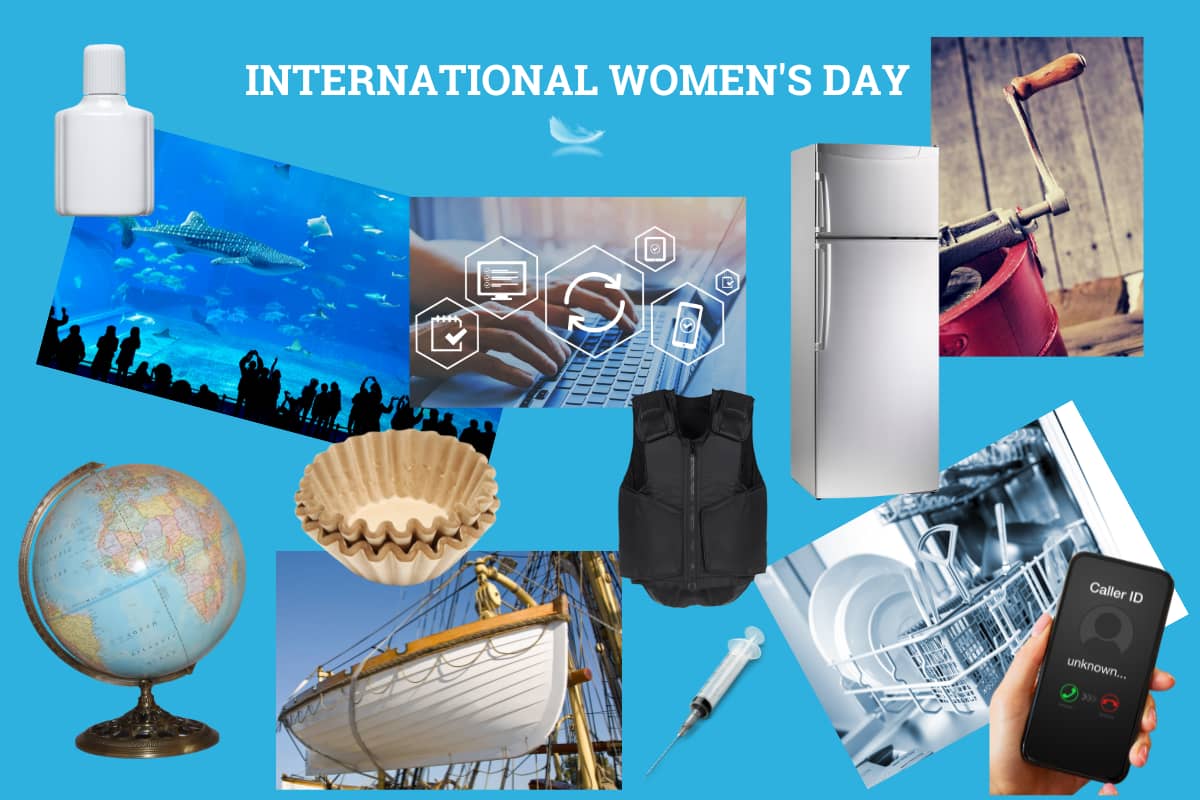Due to the gender inequality issues faced worldwide, women’s achievements often fall under the radar, so on this International Women’s Day, we’d like to spotlight some amazing creations by female inventors
Liquid Paper
In 1951, Bette Nesmith Graham was an executive secretary for WW Overton, who was the Chairman of the Board of the Texas Bank and Trust. Using IBM’s new electric typewriters to compose important documents, she became frustrated when minor errors required her to re-type entire pages. So, inspired by the painters she watched decorate the bank for the holidays (masking mistakes with additional coats of paint), she invented “Mistake Out,” which would soon be known officially as Liquid Paper when she received the patent for her invention seven years later. Fun fact: Bette was also the mother of Mike Nesmith of The Monkees.
Glass Aquarium
In 1832, French Naturalist Jeanne Villepreux-Power was looking for a way to confirm that argonauts grow their own shells vs. taking discarded shells from other organisms. To do this, she needed to observe them over time, which she could not do without a static viewpoint. So, she created the glass aquarium and proved her theory.
Computer Compiler
While working on the Universal Automatic Computer 1 in 1952, Grace Hopper discovered new ways to use computer code. She pioneered A-0, which was the first compiler. It transformed mathematical code into code that was machine-readable, essentially revolutionizing modern programming language.
Electric Refrigerator
Though a male investor appeared as a co-inventor on the patent (which was common at the time due to anti-female sentiment), the idea for the modern refrigerator we know today was purely the idea of female inventor Florence Parpart. She was granted the patent for it in 1914.
Ice Cream Maker
In 1843, making ice cream was a process that took several hours and involved intensive physical labour, so Nancy Maria Donaldson Johnson developed a new method using a manual device made from wood. The contraption contained crushed ice and an inner metal piece held the ice cream mix to be frozen and then cranked with a metal handle. What’s especially impressive is that modern freezers wouldn’t be invented for almost another hundred years.
Coffee Filter
If the name Melitta looks familiar due to the popular coffee brand, it’s no accident—the company was named for the German housewife who wanted to produce a better cup of joe and invented a way to do it. In 1908, Melitta Bentz poked holes in a brass coffee pot and created a two-part filtration system using a piece of paper. Placing the pot on a cup filled with ground coffee, she poured hot water over it and achieved her mission.
Bulletproof Material (Kevlar)
American chemist Stephanie Louise Kwolek was working for DuPont in 1964, searching for a strong fiber that could be used in place of the steel in tires. In her experiments, she created a solution that was lightweight, but unbreakable (unlike the commonly used nylon). By 1971 the formula was perfected and Kevlar was introduced. It is used today for bulletproof vests, parachute lines, cables, firefighter boots and bridge reinforcements.
Globe
Educator Ellen Fitz wanted a way to teach her students about the earth’s rotation, so she created the mounting system with vertical rings and received the patent for it in 1875. She went on to receive a second patent for a different mounting system that helped communicate the positions of the stars, in 1882.
Life Raft
As a child, Maria Hauser Beasley enjoyed learning about the mechanical workings of her grandfather’s distillery and her father’s mill. Though she began her career as a dressmaker, she would go on to invent a barrel-hooping machine and later developed several innovations, not the least of which were the improved life rafts that featured collapsable metal floats. Her life boats were used on the RMS Titanic when it set sail in 1912 and saved approximately 700 lives.
One-Hand Syringe
If you have been vaccinated for the flu, shingles or COVID, chances are the practitioner who administered the shot used a one-hand syringe to deliver it. This is a credit to its inventor, nurse Letitia Mumford Geer, who was granted a patent in 1899 that would enable medical professionals to have one hand free as they tended to their patients, effectively simplifying their method from that day forward.
Dishwasher
Following the death of her husband in 1883, Josephine Cochrane was in financial distress and knew her idea for an effective dishwasher could remedy her current situation. In the shed behind her house two years later, she developed the prototype for the first model and determined that water pressure (not scrubbers) was the answer to efficient cleaning. With the help of a mechanic (who eventually became her employee) she succeeded and secured the patent a year later.
Caller ID
Dr. Shirley Ann Jackson was the first African-American woman to earn a PhD at MIT and is who we have to thank for the technology that provides Caller ID on our telephones. As a subatomic particle researcher in both the U.S. and Europe, Dr. Jackson was able to develop this invention, which has been used ever since to safely identify phone call origins. In 2016, she was awarded the National Medal of Science.
We honour these remarkable women, and all those who came after them, for their contributions in making our world a better place.


